
Dropshipping
eBay vs. Amazon: Which One Is Better for Dropshipping?
“Should I start dropshipping on Amazon or eBay?’’ It’s a difficult debate to have as both platforms are business beasts...
Shopify vs eBay: Where Should You Start Dropshipping?
eCommerce

Dropshippers like yourself often feel intense frustration when researching potential eCommerce platforms where they could grow their businesses. At one point during your investigation, chances are you came upon Shopify and eBay, both so similar in some sections yet so different in others.
While Shopify is recommended by many if your goal is to create and manage a website from scratch, eBay is said to be more appropriate for those who want to avoid such a responsibility and focus on selling only. However, there’s so much more to mention about these platforms than what people are saying.
Having access to well-curated information about these dropshipping marketplaces is of paramount importance when exploring their features and services. Accordingly, we’ve produced a full guide on Shopify vs. eBay to get you out of the loop and help you come off the fence.
Shopify is an all-in-one web-building platform providing dropshippers with all the tools they’d need to build their online stores from the ground up. Such tools include various eCommerce tools, domain registration, unlimited product updates, a Content Management system (CMS), and many others.
The latest data reports that Shopify has been powering over 4 million online websites worldwide, which shouldn’t be surprising as the company’s gross merchandise volume has reached nearly 47 billion in 2022. With those numbers in mind, we can only expect even greater growth in the years to come.
eBay is a global eCommerce company furnishing users across the world with a selling platform where they can kick-start their businesses.
Most recent statistics show that eBay has been hosting 135 million active buyers and 18.3 million active sellers. Consequently, the gross merchandise volume of eBay is claimed to be 18.6 billion U.S. dollars. These statistics prove the platform’s incredible success and the lucrative business base it offers potential entrepreneurs.
As you might have already guessed, while Shopify allows you to build a dropshipping store from scratch, eBay is more of an online marketplace, offering you a space to list and sell your products. So, let’s go over all of the differences worth noting about these two eCommerce sites.
Shopify calls for signing up with an account prior to continuing to build a dropshipping store:

To sell on eBay, you’ll need to also create a seller’s account where you’ll be able to build your product listings:

Note: Dropshipping on eBay is possible both by owning an eBay store and directly choosing to list your items.
Both eBay and Shopify’s registration processes are accommodating to new dropshippers, providing them with step-by-step instructions on how to sign up and set up their accounts.
Being an eCommerce site specializing in web-building, Shopify is stocked up with plenty of design tools to help you create a user-friendly interface:
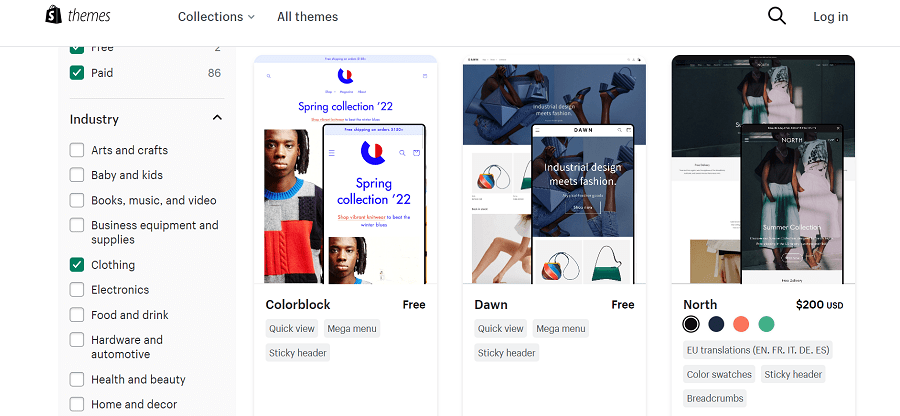
Assuming you’ve decided to develop a large-scale dropshipping business, once you’ve opened an eBay store, you’ll need to design it in a way that represents your brand. Although there aren’t a lot of customization options, eBay allows you to:
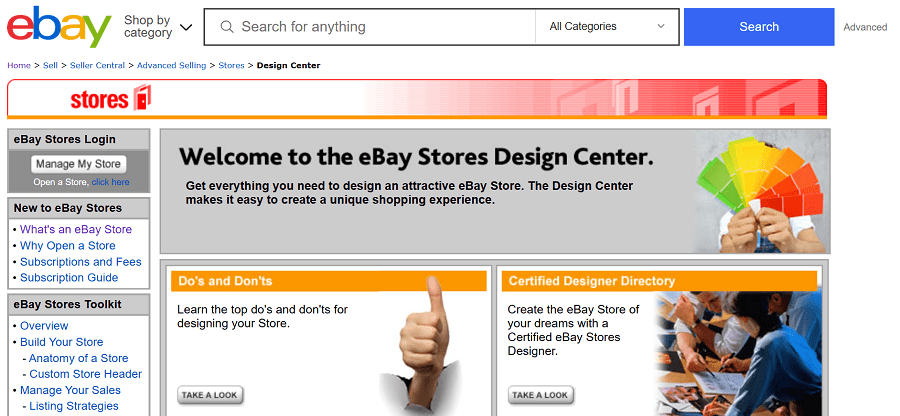
eBay is slightly limited in terms of store design as the platform allows dropshippers to make only a few tweaks here and there, but still provides them with a few tools to create a decent storefront. With Shopify users benefit from plenty of web design features and full liberty to customize.
Shopify was created with a series of built-in tools that contribute to designing a store worthy of customers’ attention and which can be easily managed by both beginners and advanced dropshippers:
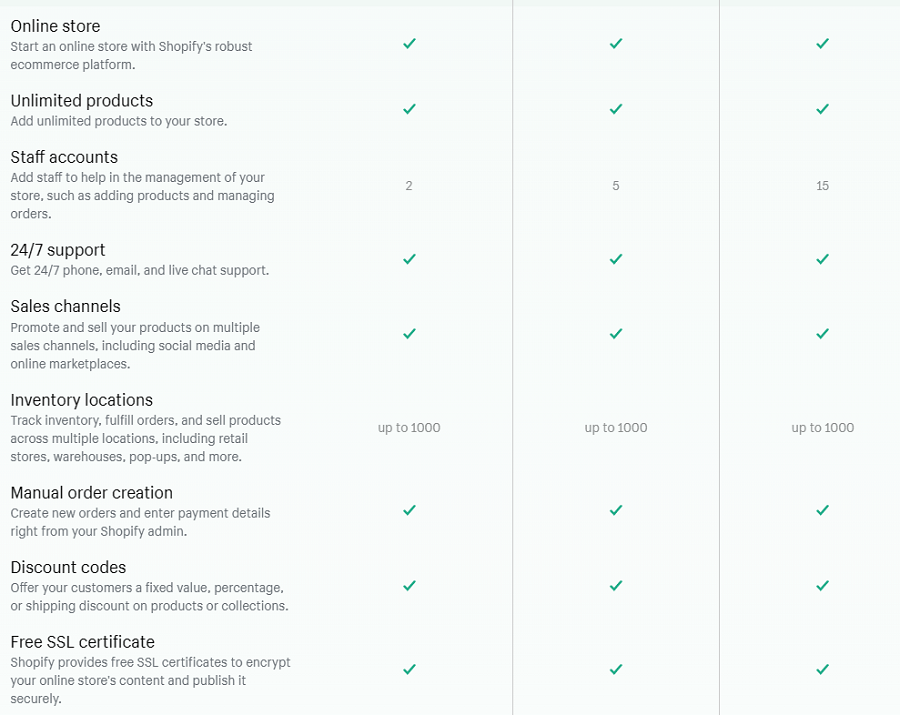
Depending on how you’ll be managing your eBay sales (via an eBay store or directly with listings), eBay has developed convenient eCommerce tools to provide you with a more manageable selling process and improve traffic to your product listings:
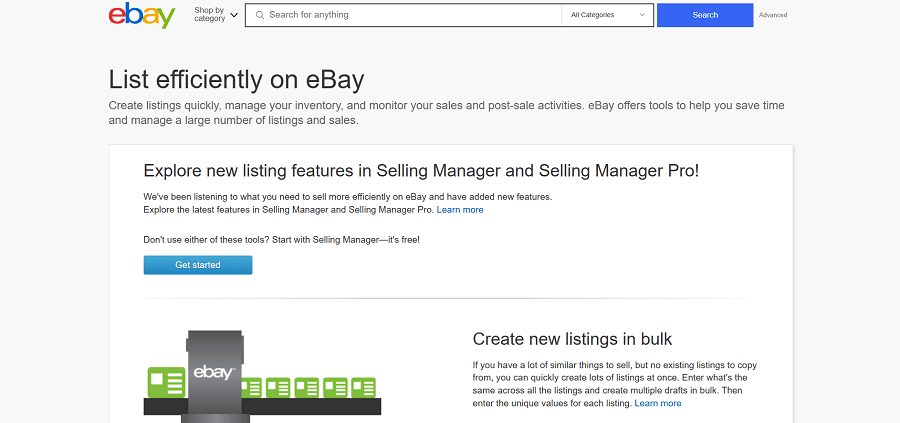
Shopify’s eCommerce tools collection is broader than eBay’s as the platform’s main goal is to enable dropshippers build a storefront from the ground up. eBay, on the other, is designed for sellers who don’t want to bother with creating a website but instead directly move on to selling. This is why eBay’s eCommerce tools are smaller in number and focus on providing users mostly with selling features.
Shopify serves users with a plethora of tools for growing their business and building a highly efficient marketing plan:
Recommended reading:

eBay is slightly a little bit behind in the marketing tools section, but still offering sellers a basic collection of features for expanding their stores:
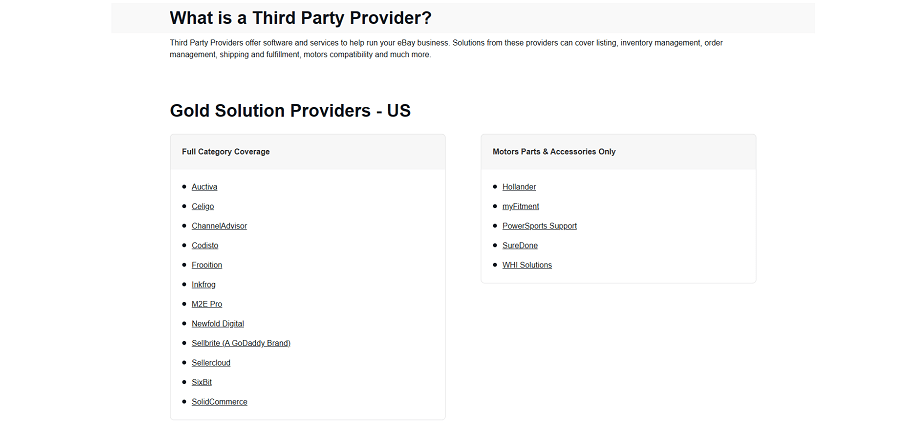
Shopify will land you a hand in your growth strategy with a bunch of marketing tools, third-party extensions, and built-in SEO features. Although not as affluent in this sector, eBay can still help you expand your store’s functionality with the few third-party providers it offers, assist you with ready-to-use email marketing templates, and give you direction on how to scale the platform’s own search engine.
Depending on what you need to grow and manage your dropshipping store, Shopify offers at your disposal three subscription plans, all of which include the same fundamental eCommerce tools but also include a few different functionalities:
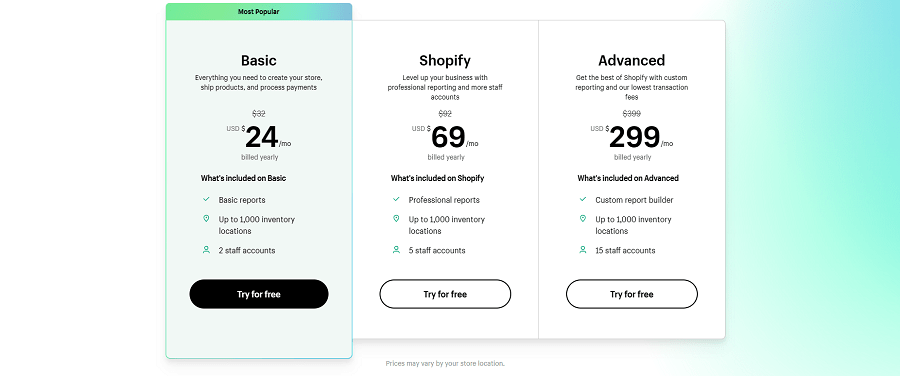
Note: Shopify offers a 14-day free trial. After the trial is over, you’ll be asked to choose your preferred subscription package. You can also decide on a plan during the free trial as well, which will be charged and activated once the trial expires.
As previously mentioned, in order to dropship on eBay, you don’t need to necessarily purchase an eBay Store subscription plan. However, if you do, there are a few packages you can choose from:
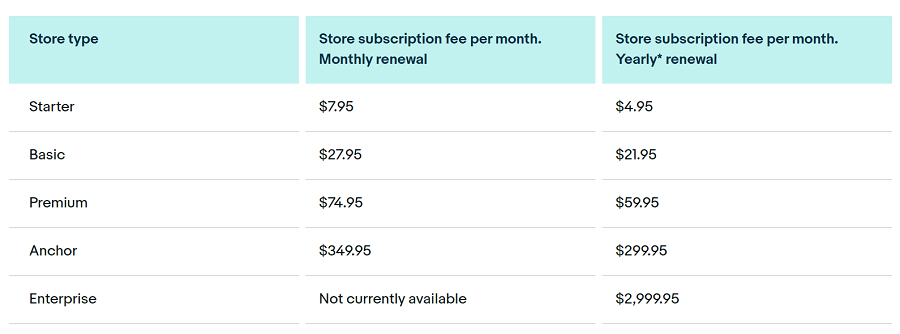
Both Shopify and eBay offer multiple subscriptions designed for both new dropshippers and experienced sellers. eBay’s plans are significantly cheaper but come with a smaller range of eCommerce features. Shopify’s packages may be a bit on the pricey side, however, you’ll get your money’s worth regarding the large number of tools each plan offers on top of which you also get a free trial.
Shopify offers a rich choice of payment providers, counting over 100 unique dropshipping payment gateways. If you’d rather avoid setting up external payment methods, the platform provides you with their own payment solution – Shopify Payments. However, if you still like to have the option to manage your payments, there are plenty of third-party gateways you can choose from such as:
eBay has been working to incorporate a few payment gateways and is now allowing sellers to use the following payment options:
In addition to offering their own payment provider, Shopify has extended that collection to +100 methods. eBay’s payment solutions aren’t as versatile but will still get the job done and offer your customers a pleasant shopping experience.
Shopify obligates merchants to pay transaction fees that vary depending on which plan they’ve subscribed to:
Note: These charges apply only if you’re using third-party payment providers. Sellers using Shopify Payments are exempted from paying transaction fees.
eBay subjects sellers to a few fee payments regardless if they own an eBay store or have chosen to list items without a storefront:
Note: In the case of dropshipping via an eBay store, some fees may be different based on the subscription package you’re using such as the insertion fee:
Take a look at the rest of the fee changes in eBay’s Store Selling Fees section.
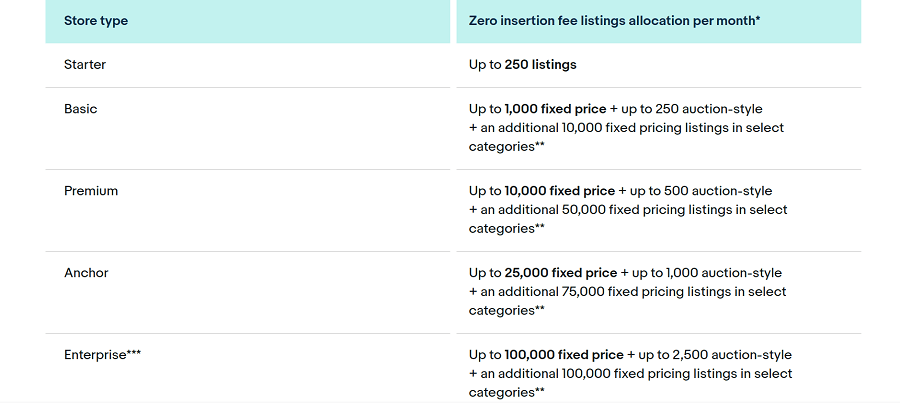
eBay obliges sellers to pay a couple of types of non-optional fees. Shopify charges only a transactional fee when using alternative payment methods and no fees when subscribed to Shopify Payments.
Shopify is one of the most used platforms by dropshippers across the world as it offers them extremely convenient conditions to manage their businesses. On top of that, it provides them with a highly protected selling environment, obliging all users to respect the rules of Shopify’s dropshipping policy among which are:
Dropshipping on eBay is another popular strategy many sellers opt for. The platform is welcoming to dropshippers and regulates this fulfillment method according to eBay’s dropshipping policy which includes:
Both Shopify and eBay provide dropshippers with a safe selling platform and similar dropshipping policies they need to comply with. However, eBay’s policy is slightly stricter in comparison to Shopify in terms of requiring dropshippers to partner up with wholesale suppliers only.
Check out: Best eBay suppliers
Shopify stands out significantly in section, offering plenty of ways dropshippers can get in contact with the platform’s customer support team. The service is available 24/7 and members of the client service can be reach by phone, email, and live chat.
User support is further furnished via the Shopify Help Center where sellers have access to a vast database of material on eCommerce and dropshipping-related topics. Alternatively, the Shopify community is always online to consult you in issues you might be experiencing.
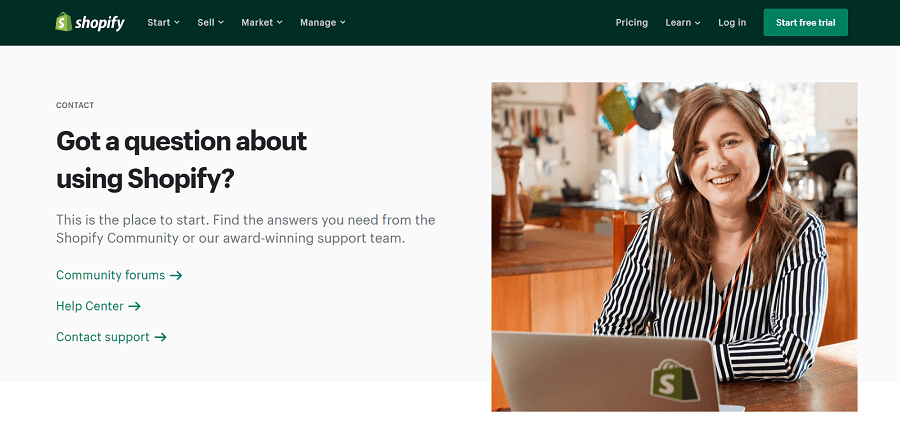
Note: Take a look at these Shopify Apps for Customer Support.
eBay also has a well-developed customer support service, with its agents available to dropshippers via phone and live chat assistance disposable every day of the week between 9 AM and 6 PM CET.
In terms of helpful material, eBay has a massive library of beginner’s guides and articles about running and managing a dropshipping business on the marketplace. Additionally, the eBay community allows you to reach out to fellow merchants and start a conversation with expert sellers.
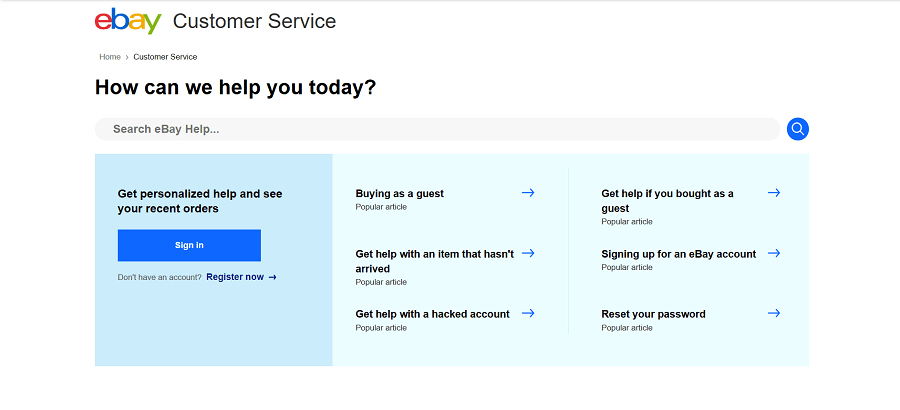
eBay and Shopify have developed similarly accessible customer service systems to help out users avoid any unnecessary hassle. However, Shopify’s customer team is somewhat more reachable as it can e contacted 24/7. eBay’s support members are available for chatting within working hours but still offer clients great assistance.
To give you an overview of everything we discussed in this article, let’s make a comparison between Shopify and eBay by weighing up the pros and cons of both platforms.
Pros
Cons
Pros
Cons
After going through this massive showdown between Shopify and eBay, we can confidently report that both eCommerce sites can serve as good options for dropshipping. Ultimately, your choice depends solely on your dropshipping business plan and how are you planning to manage it – whether you prefer to launch a full-blown store or would rather stick to online marketplaces and a much simple store setup. Having this in mind, here’s what we recommend:
Shopify is a good choice for:
Note: For a thorough step-by-step tutorial, check out our guide on How to Start Dropshipping on Shopify.
eBay is a good choice for:
Note: To get an even more comprehensive explanation of eBay dropshipping, read our guide on How to Start Dropshipping on eBay.
One of the main things that’ll help you thrive on highly saturated eCommerce marketplaces, such as eBay, is partnering up with an excellent supplier. BrandsGateway can offer you a great deal that involves selling luxury clothing of impeccable quality and high demand.
If you have a website based on Shopify, WooCommerce, Wix, or Shift4Shop, you can start listing BrandsGateway’s products by installing the eBay app in your store and benefit from automatic inventory and order forwarding. In other cases, the supplier offers a CSV file that gets updated every 4 hours.
If your intention is to launch a Shopify store, BrandsGateway is here to provide you with a premium dropshipping and wholesale service. With this supplier, you’ll be getting exquisite clothing items to sell, great profit margins to work with, and a fully automated dropshipping system among many other features.
BrandsGateway’s Shopify plugin is available for installation via their convenient Shopify App and can be set up in a few steps:
Shopify is an online platform specializing in web-building, while eBay is an eCommerce marketplace where you can directly list and sell your products without the need of owning an online store.
Both eBay and Shopify are good eCommerce places to attempt dropshipping. The former is mostly recommended for dropshippers seeking to focus less on store building as eBay is much less equipped with design tools. The latter is a great option for merchants searching for a platform to launch and operate a full-fledged online business and have extra time on their hands to set up a website from start to finish.
Yes. You can easily merge eBay and Shopify by opening a Shopify store and installing eBay as one of your sales channels via the Shopify App Store. Once that’s done, you’ll be able to list all product from your Shopify store on eBay as well.
What is dropshipping?